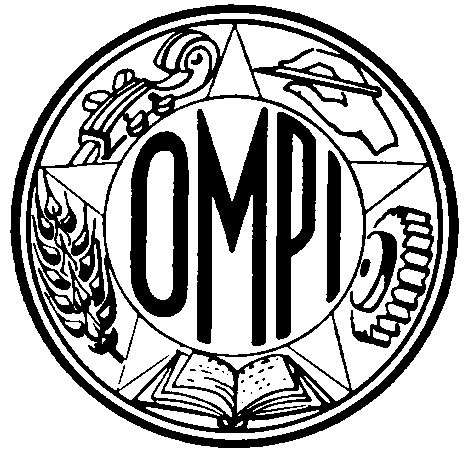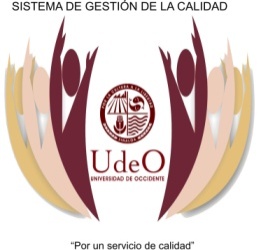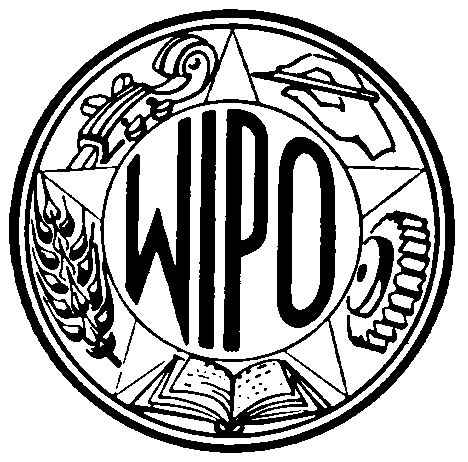SCCR104 PAGE 3 WIPO E SCCR104 ORIGINAL ENGLISH DATE
SCCR104 PAGE 3 WIPO E SCCR104 ORIGINAL ENGLISH DATE
SCCR/10/4: WIPO Guide on Surveying the Economic Contribution of the Copyright-Based Industries
|
WIPO |
|
E |
|
WORLD INTELLECTUAL PROPERTY ORGANIZATION |
||
|
GENEVA |
||
standing
committee on copyright
and related rights
Tenth Session
Geneva, November 3 to 5, 2003
wipo guide on surveying the economic contribution of the copyright-based industries
1 At its eighth session in November 2002, the Standing Committee on Copyright and Related Rights (SCCR) considered document SCCR/8/2 “Short Description of Possible Subjects for Future Review by the Standing Committee.” The Committee adopted a decision that an item on Other Issues for Review would be kept on the Agenda for the next session of the SCCR so that the Secretariat could report on the progress of work done on those issues.1 The present document describes a project undertaken by the Secretariat regarding the issue of the economic contribution of the copyright and related rights sector.
2 Work by WIPO on the economics of copyright received strong support by many delegations at the said session of the SCCR.2 As a first step in clarifying the importance of copyright and related rights as a tool for economic, social and cultural growth, the Secretariat has developed a Guide on Surveying the Economic Contribution of the Copyright-Based Industries.3
3 Understanding the economic contribution of activities based on copyright protection will facilitate the identification and development of appropriate policies to support the relevant industries and activities. Although existing research in this field has provided evidence of the contribution of the copyright-based industries to the national economy, that contribution remains largely unstudied, particularly in developing countries and countries in transition. Of the studies done so far differences in methodologies, practices and objectives adopted have made it difficult to compare their results. Hence the purpose of the Guide is threefold: (1) to summarize existing experience in surveying the copyright-based industries; (2) to develop a practical instrument in the form of guidelines, recommendations and survey methods; and (3) to establish a basis for comparison of future surveys built on reliable data and common methodologies.
4 In order to achieve these goals WIPO convened in 2002, with the support of the Government of Finland, a Working Group of well-known economists, who are experienced in the preparation of studies on the subject or in the field of economic research on the copyright-based industries. The members of the group were Mr. Jeremy Thorpe (Australia), Mr. Antonio Marcio Buainain (Brazil), Mr. Ahmed Ghoneim (Egypt), Mr. Robert Picard (Finland), Mr. Jules Theeuwes (Netherlands), Dr. Ruth Towse (Netherlands), Professor Richard Watt (Spain) and Mr. Stephen Siwek (Unites States of America). The Working Group was chaired by Mr. Jukka Liedes, Special Adviser to the Government of Finland. Relevant input was also received from the following international non-governmental organizations: the International Confederation of Societies of Authors and Composers (CISAC), the International Federation of Reproduction Rights Organizations (IFRRO), the International Federation of the Phonographic Industry (IFPI), the International Intellectual Property Alliance (IIPA) and the International Publishers Association (IPA). The deliberations of the Working Group formed the basis for preparation of the Guide by the Secretariat. Various other sources, including academic research, official publications and statistics, were also used.
5 The Guide will assist countries in quantifying the economic contribution of creative activities based on copyright protection, as an area of growing interest to policy makers and to industry where, as yet, little international cooperation has taken place. Through application of the measurement procedures described, countries will be able to reach heightened understanding of the numerous positive effects of copyright on the economy and, as a consequence, of the economic importance of copyright protection generally.
6 The Guide addresses three main indicators of the size of the copyright-based industries – the value added, employment and foreign trade generated by them. It outlines the methodology of the survey, justifies the choice of indicators, describes their characteristics and elaborates on existing approaches to their measurement. The social effects of copyright and the effects of copyright piracy are not covered in the Guide as there is an insufficient body of thinking and research in these two areas. These topics could be the subject of possible future work.
7 The recommendations contained in the Guide were developed against the background of existing research experience, United Nations statistical methodologies and other international efforts in this field. Any first survey undertaken on the basis of the Guide requires a multidisciplinary approach from its inception, so that a firm foundation is laid for subsequent studies.
8 As this is the first compilation of guidelines, the Guide will need to be tested in specific national surveys in cooperation with interested governments. It will be refined on the basis of the testing and the experience thus gained. The Secretariat will be pleased to support, resources permitting, surveys to be carried out by Member States.
9 The Standing Committee is invited to note the contents of this document.
[End of document]
1SCCR/8/9 paragraph 126 (d).
2The subject is addressed in SCCR/8/2, VII, paragraphs 27 to 30.
3WIPO publication No. 893 (E), ISBN 92-805-1225-7.
Tags: sccr104, original, english
- JAPANESE LANGUAGE PROGRAM WRITTEN CONSENT I AM THE
- NURTURING LEADERS | EMBRACING DIFFERENCE | ACHIEVING EXCELLENCE
- RESIDENT AND VISITOR PARKING PERMIT APPLICATION PLEASE POST THIS
- WYMAGANIA DOTYCZĄCE UŻYTKOWANIA MASZYN LISTA KONTROLNA – ARKUSZ OCENY
- VERSLAG MONDIALE RAAD DD 25 OKTOBER 2016 AANWEZIGHEDEN NAAM
- MEĐUNARODNE ORGANIZACIJE OSCE BANJA LUKA KNJAZA MILOŠA 15 78000
- PROPOSAL FOR FY2011 NASA OSMA SARP FOR
- ACUERDO DE COOPERACIÓN Y ASISTENCIA MUTUA ENTRE LAS AUTORIDADES
- HERZLICH WILLKOMMEN AM GODINATEICH DES FREIZEITKLUBS OBERHAAG! WIR MÖCHTEN
- ELTE TERMÉSZETTUDOMÁNYI KAR BEIRATKOZÁSI TÁJÉKOZTATÓ A 201819ES TANÉVRE RÖVIDCIKLUSÚ
- P ÁGINA 5 DE 5 ACUERDO DE CONFIDENCIALIDAD ACUERDO
- NAVSUP WSS ENGINEERING DEPARTMENT (CODE 071) THE ENGINEERING DEPARTMENT
- TARIFFE DELLE PRESTAZIONI DI RIABILITAZIONE OSPEDALIERA EROGATE IN REGIME
- SOLICITATION ANNOUNCEMENT THE FOLLOWING SOLICITATION HAS BEEN POSTED ON
- ANNEX I NUMBER OF CSSA RECIPIENTS BY CASE NATURE
- DR MARIO EDUARDO COHEN CURRICULUM ACADÉMICO SINTETIZADO FORMACIÓN UNIVERSITARIA
- VEDTEKTER FOR MELAND KYRKJEGARD I MEDHALD AV LOV AV
- MICHAEL JACKSON WWWFAMOUS PEOPLE LESSONSCOM MICHAEL JACKSON HTTPWWWFAMOUSPEOPLELESSONSCOMMMICHAELJACKSONHTML CONTENTS
- JOINT EUROPEAN RESEARCH INFRASTRUCTURE NETWORK FOR COASTAL OBSERVATORIES ILC
- DISCOVER CANADA CITIZENSHIP STUDY GUIDE ANSWERS TO OTHER STUDY
- NTI NEWS RELEASE PAGE 0 NR 0307 EDU ENG–
- BOARD OF ISLAND COUNTY COMMISSIONERS MINUTES OF MEETING 112
- 46 CONTENTS 1 INTRODUCTION 2 DEFINITIONS 3 PERMITS
- NUMERO 253 EL CONGRESO DEL ESTADO LIBRE Y SOBERANO
- TORNEO GRAVN FEDERACIONES 2010 GRAVN FEDERAZIOEN ARTEKO TXAPELKETA 2010
- AMT FÜR BIBLIOTHEKEN UND LESEN AUFGABENPROFIL EINES SCHULBIBLIOTHEKARS
- SÓLO UN INTERNISTA ATIENDE LAS 17 HORAS DE GUARDIA
- 164 ULUSLARARASI TRAFIKTE KULLANILACAK DEMIRYOLU MALZEMESINE UYGULANAN TEKNIK STANDARTLARIN
- ZAŁĄCZNIK NR 1 DO ZARZĄDZENIA NR 692016 WÓJTA GMINY
- APPLICATION FOR AUTHORIZATION TO INSTITUTE A CLASS ACTION CANADA
ÐÏÀ¡±ÁÞŸ !ÞŸŸŸX80ÛVÕRÎKÈD Ÿ { Ö PÍJ Å ] Ù
 RECTÁNGULO 11 NOTA DE PRENSA Nº0502020SGIIPMPB FUMIGACIÓN Y DESRATIZACIÓN
RECTÁNGULO 11 NOTA DE PRENSA Nº0502020SGIIPMPB FUMIGACIÓN Y DESRATIZACIÓN INFORME DE EVALUACIÓN DE LA MEMORIA PRESENTADA PARA EL
INFORME DE EVALUACIÓN DE LA MEMORIA PRESENTADA PARA EL CARRICKFERGUS RUGBY FOOTBALL CLUB FOUNDED 1865 AFFILIATED
CARRICKFERGUS RUGBY FOOTBALL CLUB FOUNDED 1865 AFFILIATEDGÉNERO Y MIGRACIÓN ALGUNAS RECOMENDACIONES PARA LA CONSTRUCCIÓN DE
 FILE DOCUMENTS TO BE SUBMITTED FOR MQNRI SEATSVQ DEGREE
FILE DOCUMENTS TO BE SUBMITTED FOR MQNRI SEATSVQ DEGREE OMPISMESMVD06INF1 PÁGINA 6 S OMPISMESMVD06INF1 ORIGINAL ESPAÑOL FECHA 21
OMPISMESMVD06INF1 PÁGINA 6 S OMPISMESMVD06INF1 ORIGINAL ESPAÑOL FECHA 21 LIBRARIES AND ELEARNING ORGANISATIONAL AND TECHNICAL INTEROPERABILITY NEIL
LIBRARIES AND ELEARNING ORGANISATIONAL AND TECHNICAL INTEROPERABILITY NEILMODEL DE CONSENTIMENT INFORMAT PER A UN ESTUDI
 EXHIBITOR MANUAL 45TH ICCA CONGRESS & EXHIBITION SOFITEL CAPSIS
EXHIBITOR MANUAL 45TH ICCA CONGRESS & EXHIBITION SOFITEL CAPSIS WWWRIDROMUCLMES OCTUBRE 2012 REVISTA INTERNACIONAL DE DERECHO ROMANO
WWWRIDROMUCLMES OCTUBRE 2012 REVISTA INTERNACIONAL DE DERECHO ROMANO W08050582V WIJZIGING VAN ARTIKEL 247 VAN BOEK 7 VAN
W08050582V WIJZIGING VAN ARTIKEL 247 VAN BOEK 7 VANNA OSNOVU ČLANA 64 ZAKONA O PRIVREDNIM DRUŠTVIMA („SLUŽBENI
 PLAN DE AUDITORIA (AIFO03) REFERENCIA DE AUDITORIA AI012016 FECHA
PLAN DE AUDITORIA (AIFO03) REFERENCIA DE AUDITORIA AI012016 FECHALAG – PROJEKTI PREDLAGANJE PROJEKTNIH IDEJA U PRILOŽENIM TABLICAMA
NAME BUBBLE GUM PHYSICS LAB PURPOSE TO INTRODUCE STUDENTS
DISSERTATIONS BY AUTHOR 350 DOCTORAL DISSERTATIONS BY AUTHOR 19592007
 PASSÉ COMPOSÉ (AUXILIAIRE ÊTRE) EXEMPLE ELLE AU THÉÂTRE
PASSÉ COMPOSÉ (AUXILIAIRE ÊTRE) EXEMPLE ELLE AU THÉÂTRE2 SPAN220 LOS GIRASOLES CIEGOS GUÍA DE LECTURA 1
 CHAPTER 1 WEATHER RISK MANAGEMENT FOR AGRICULTURE BY JOANNA
CHAPTER 1 WEATHER RISK MANAGEMENT FOR AGRICULTURE BY JOANNA
